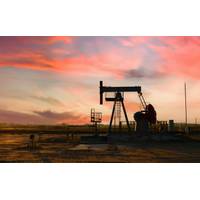Use a new EOR technology brings award for BP
In recognition of the breakthrough new enhanced oil recovery – or EOR – technology, BP has been presented with the Distinguished Achievement Award. The award was presented on 4 May, 2014 at the Offshore Technology Conference (OTC) in Houston, Texas. This is the second time in four years that BP has won the award at this major annual gathering for oil and gas professionals.
BP's plans to use the new enhanced oil recovery – or EOR – technology from day one of operations at the Clair Ridge field west of Shetland, UK have won BP this major industry award.Until now, emerging EOR techniques have typically been applied to older fields as the oil production rate falls and recovery of oil and gas becomes harder - and uneconomic.
However when the first oil begins to flow from the Clair Ridge field in late 2016 BP will be employing a technology called LoSal® EOR to flood, or push, more oil from the reservoirs. This is expected to result in more than 40 million additional barrels being cost effectively recovered over the lifetime of the field.
Although EOR has thus far mainly been used at older fields, Raymond Choo, deployment manager for BP’s EOR Technology Flagship programme, says the best time to consider EOR is when the original development planning is done. “There’s a saying the best time to plant a tree was 20 years ago; the second best time is now”. Choo says a similar principle applies to EOR.
Defying convention
The LoSal® EOR technology was based on taking a fresh approach to the potential of using low salinity water in oil reservoirs. Injecting fresh water into a reservoir can cause problems as it can cause some clays to swell and block the pores that hold the oil. But BP observed that reducing the salinity of the water could also have a positive impact on pore-scale displacement, and ultimately recovery.
The science behind LoSal® EOR is based on the way oil molecules are bound to clay particles by ‘bridges’ of divalent (double-charged) ions. In the high salinity water of the reservoir these bridges are compressed to the clay surface. But by reducing the salinity, we observed that these ‘bridges’ relax, allowing non-bridging monovalent ions to access and replace the divalent ions. With the bridges removed, the oil molecules are freed to be swept towards the producing wells.
LoSal® EOR was tested in BP’s own laboratories and then in an oil field in Alaska before the capability to inject low salinity water was built into the Clair Ridge field development plan.
LoSal® EOR is one of many EOR techniques involving waterflooding – where modified water is injected into a reservoir to increase recovery. Other EOR techniques include injecting gas, or a mixture of gas and water or chemicals.
‘Pyramid of proof’
The various EOR techniques require robust testing, what Choo calls a ‘pyramid of proof’. Built up from a large body of potential core-floods tested in BP’s labs, to numerous single well tests and finally to a multiple well field trial, the pyramid of proof underpins the ability to predict field performance from models and simulations.
In the case of LoSal® EOR, the pyramid of proof has been building over two decades, providing the confidence to deploy the technology from day one at Clair Ridge. The project is expected to unlock around an additional 42 million barrels of oil at an additional cost of $3 per barrel.. Using LoSal® EOR is also expected to greatly reduce risks of souring and scaling – two other challenges for subsea production.
The development signals the potential of EOR for the future. Choo says: “There is a huge prize in getting more from what the industry already operates. Increasing the average recovery factor by just 1% across our own portfolio could yield several billion barrels of incremental oil.”
Potential
Comparing the potential of EOR with finding and developing new fields, David Eyton, BP’s Group Head of Technology, concludes: “We have probably reached a point globally when the potential for enhanced recovery from known hydrocarbon resources exceeds the potential from new discoveries.”
BP delivers more than 10% of the world’s light oil EOR production, more than any other international oil company. At Magnus in the UK North Sea, EOR accounts for 30% to 40% of current production whilst at Ula, in the Norwegian North Sea, essentially all the current production is due to EOR, extending the life of the field.






